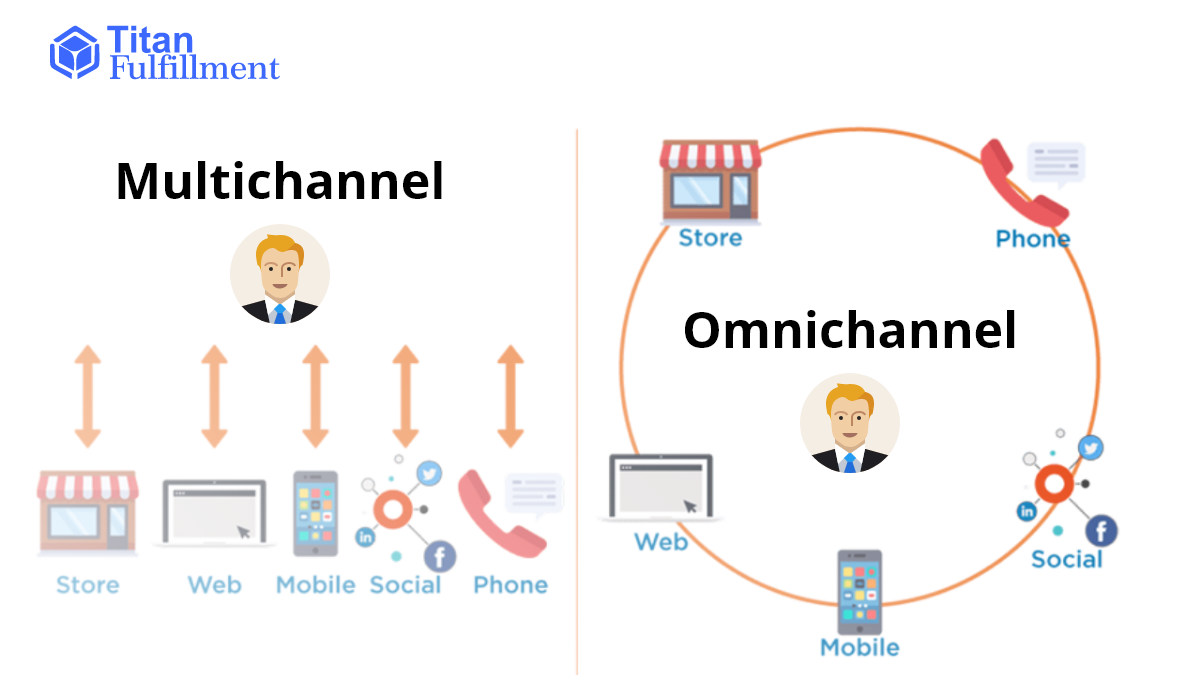What is Multichannel?
Multichannel marketing and information dissemination refers to the use of several channels to promote and spread a brand’s message. There is no integration between these several channels. For instance, a billboard and a company’s website are independent marketing platforms that are used to spread awareness of a brand.
These channels aren’t always interconnected with one another, though. For instance, the tone and substance of your Facebook advertisement may be quite unlike from what you publish on Pinterest or in your marketing emails.
What is Omnichannel?
Omnichannel utilises a variety of channels for consumer involvement, similar to multichannel. An omnichannel strategy focuses on the interactions between several channels and the consumer. A good omnichannel configuration maintains channel-to-channel synchronisation of customer and product data. The ultimate objective is to optimise client convenience so that every engagement with a business across various channels seems to be a seamless one. Omnichannel retail is sometimes known as “unified commerce” or “seamless commerce.”
Multichannel vs Omnichannel compared
| Multichannel | Omnichannel |
| Centres the experience on the product | Centres the experience around the client |
| Every channel has its own stock. | Inventory can be switched across channels. |
| One channel is used for the customer journey. | The customer’s journey involves a number of channels. |
| Employs various sales and marketing tactics for various mediums. | Employs a combined sales and marketing strategy |
1. Multichannel is more product-focused, whereas Omnichannel is more customer-focused.
One of the key distinctions between the two is that whereas omnichannel focuses on enhancing the consumer experience, multichannel prioritises customer engagement. A key component of an omnichannel strategy is recognising all points of contact a consumer has with a brand and figuring out how to take advantage of those interactions to improve the customer’s convenience or strengthen their relationship with the company. Businesses use a multichannel approach to reach as many valued consumers as they can with their products, but the focus is mostly on growing their online presence rather than improving the customer experience.
2. Unlike multichannel, which does not integrate channels, omnichannel retail explicitly connects channels to make them function together.
The consumer, not the channel, is the main emphasis of multichannel marketing. The goal is to provide a seamless experience as the client switches from one channel to another, reducing friction as they travel between several touchpoints. More disconnected channels are preferable than fewer linked ones.
While omnichannel marketing builds on interactions on other channels in order to progress the customer journey at each touchpoint, multichannel marketing employs a multitude of channels to give a consumer the same content or unrelated material.
3. In contrast to a multichannel strategy, which restricts the customer experience to what each channel is capable of, an omnichannel strategy develops new customer experiences.
By combining the capabilities of many channels, businesses may provide novel and memorable customer experiences that customers wouldn’t typically get from a single channel.
A multichannel strategy makes it easier for customers to identify the items they desire and allows them to buy them on platforms they are already familiar with, like Amazon, but the customer’s brand exposure is only on that platform. To integrate its Amazon business into a comprehensive omnichannel strategy, the company might use extra marketing strategies.
4) Quantity vs quality
The last distinction between the two is the quantity of support channels employed in comparison to the calibre of the assistance provided through them.
Multichannel is all about increasing the amount of channels accessible, as we have already said. The better, the more channels offered. It broadens the audience and gives clients the option of how to interact with a company. However, there is no attempt made to connect the channels, so consumers must start again when they transfer from one to the other, which might reduce the effectiveness of the service they receive.
The level of customer service provided across all channels is what omnichannel is all about. A client may select from any available channel and be certain that the level of help they get will be the same.
HOW CAN TITAN FULFILLMENT HELP YOU?
Customer experience should always be a priority since it is extremely significant to any company or organisation. In light of this, an omnichannel strategy is preferable than a straightforward multichannel strategy.
In comparison to the single channel method, omnichannel and multichannel approaches both have the potential to boost consumer satisfaction, but they are also more complicated. Moving beyond a single-channel paradigm may be very beneficial for a firm with the correct strategy and technology.
This entails giving each new channel adequate time to be introduced and synchronised with others. TITAN FULFILLMENT is an integrated contact centre solution that makes it simple to link channels to your CRM, current customer contact channels, and other channels for communication.
